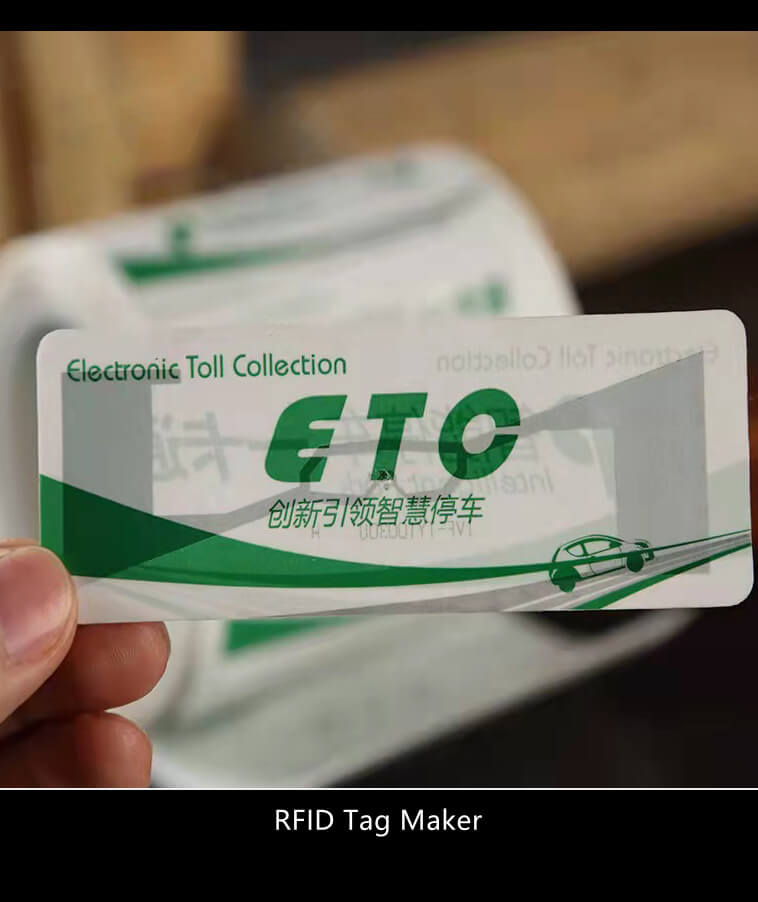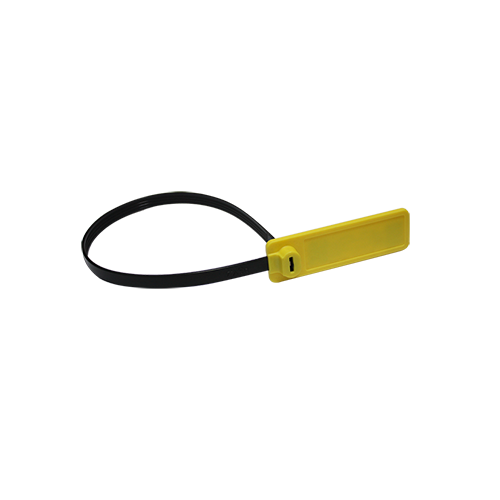Introduction
Radio Frequency Identification (RFID) technology uses radio waves to communicate between an electronic tag and a reader device. An
RFID sticker for a car contains an RFID chip that consists of an antenna and a microchip, which stores a unique identification number. When the sticker is detected by an RFID reader, the reader sends a radio signal to the tag’s antenna, which powers the chip and allows it to transmit its identification number back to the reader. This identification number is then used to retrieve information about the car, such as its toll or parking payment history.
Most RFID stickers for cars use ultra-high-frequency (UHF) chips. UHF RFID technology operates in the frequency range of 860-960 MHz and can read multiple tags simultaneously, making it ideal for applications such as toll payment and parking management. Common UHF RFID chips used in RFID stickers for cars include the Impinj Monza R6, Alien Higgs-3, and NXP UCODE 7.
In summary, an RFID sticker for a car uses RFID technology, an electronic tag, and an RFID reader to communicate and transmit data between the sticker and a computer system. The UHF RFID chip, commonly used in RFID stickers for cars, provides efficient and accurate data transmission for various applications.
Benefits of using RFID Sticker for Car
Convenience
One of the most significant benefits of using an
RFID sticker for a car is the convenience it offers. With the tag attached to the windshield, the driver doesn’t need to physically hand over cash or cards at toll booths or parking lots. The RFID reader automatically detects the sticker and allows the vehicle to pass through, making the process much faster and more convenient.
Security
An RFID sticker for a car also offers enhanced security. Since the tag is unique to each vehicle, it ensures that only authorized vehicles are allowed access to a specific area, such as a parking lot or restricted zone.
Cost-effective
Using an RFID sticker for a car is cost-effective in the long run. Compared to traditional payment methods, such as cash or credit cards, RFID technology eliminates the need for physical transaction processing and reduces the associated costs.
Time-saving
The use of RFID stickers also saves time. Since the technology is automated, it significantly reduces the time spent waiting in long lines or searching for parking spaces.
How RFID Sticker for Car Works
RFID technology
An RFID sticker for a car contains a small electronic chip and an antenna. The chip contains a unique identifier that is transmitted through radio waves when the tag is detected by an RFID reader. The reader captures the signal from the tag and transmits it to a computer system for processing.
Installation process
The installation process of an RFID sticker for a car is straightforward. The tag is usually placed on the windshield, and it can be read by RFID readers positioned at toll booths or parking lots.
Different types of RFID Sticker for Car
Passive RFID sticker
A passive RFID sticker for a car does not contain its power source and relies on the radio waves emitted by the reader to power the tag. It is an inexpensive and straightforward option for toll payment and parking management.
Active RFID sticker
An active RFID sticker for a car contains its power source and can transmit signals over a more extended range than passive tags. It is suitable for large parking lots and access control systems.
Semi-passive RFID sticker
A semi-passive RFID sticker for a car has its power source to run the chip, but the antenna is powered by the radio waves emitted by the reader. It is commonly used in toll payment systems.
Applications of RFID Sticker for Car
Toll payment
The RFID sticker for a car is widely used for toll payment. Instead of stopping at the toll booth to pay cash or swipe a card, the RFID reader detects the tag attached to the car, and the payment is automatically deducted from the driver’s account.
Parking management
The RFID sticker for a car is also used for parking management. It can be used to grant access to specific parking lots, and the payment is automatically deducted from the driver’s account when they exit the lot.
Access control
The RFID sticker for a car is used in access control systems to restrict access to specific areas, such as restricted zones or company premises.
Future of RFID Sticker for Car
The use of RFID stickers for cars is expected to grow significantly in the future. The technology offers enhanced efficiency and security, making it ideal for various applications, including autonomous vehicles. As the technology advances, the cost of implementation is expected




